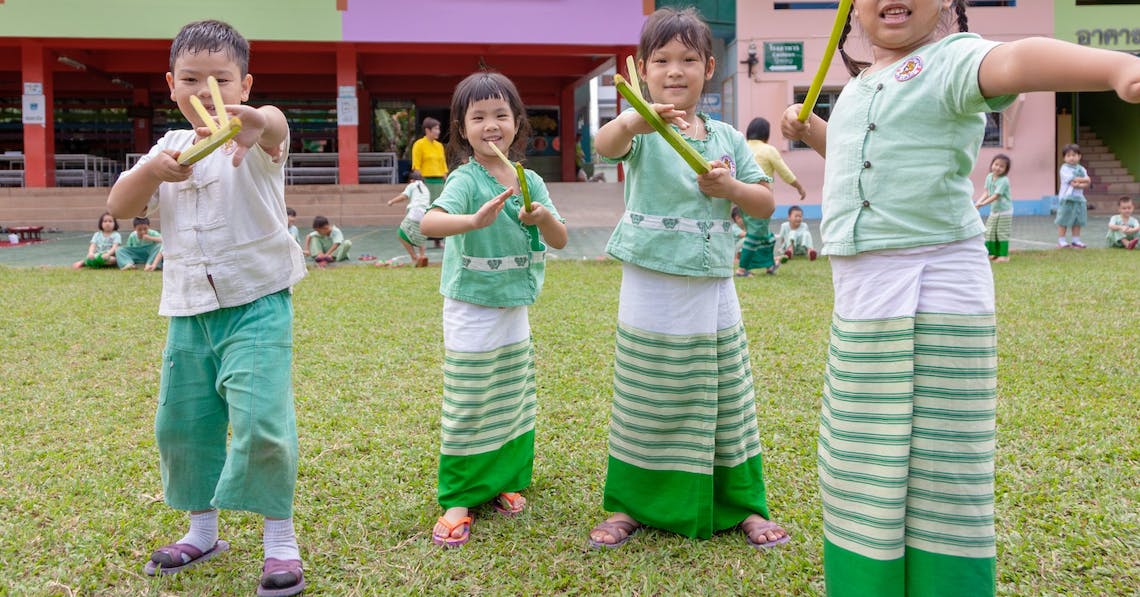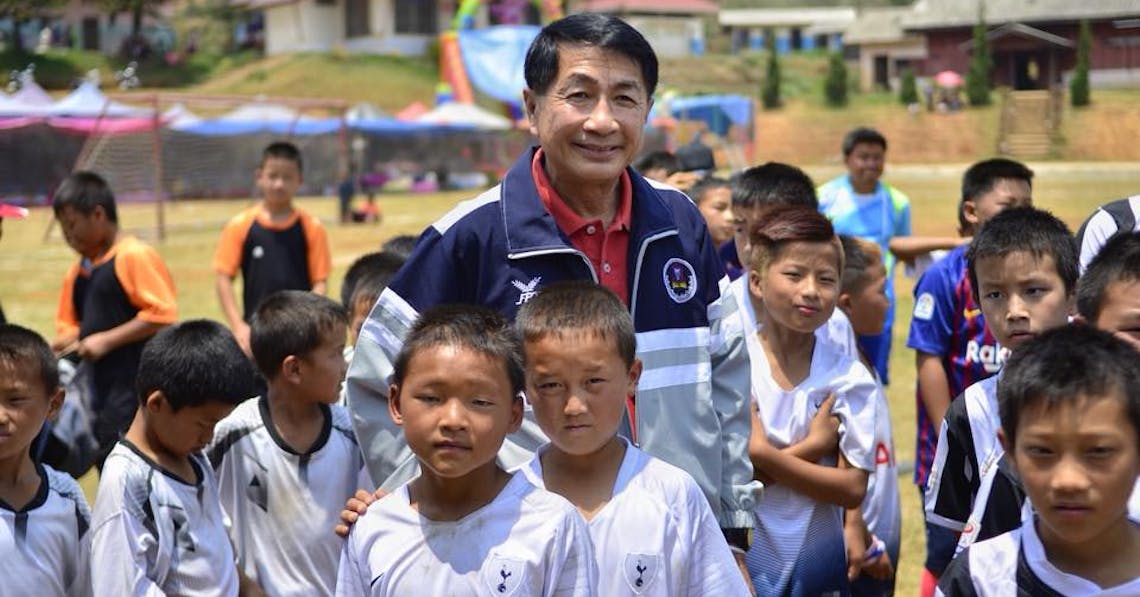In 2013, Thailand was ranked eighth amongst ten ASEAN countries in terms of quality of education; with Vietnam and Myanmar being the bottom two nations. In 2015 the Programme for International Student Assessment (PISA) reported that Thai students’ performances have dropped drastically from the previous assessment, especially in reading and science. Thailand was slapped again in 2017 by a 2017/2018 Global Education Monitoring Report by UNESCO which addressed the issue, “Thailand has an accountability system based on test scores, yet learning outcomes have not improved from 2003-2015. The country has not published a national education monitoring report since 2006, which the GEMR deems crucial for transparency with the public over progress against the national education plan.” At this point, most experts and monitoring bodies in Thailand, as well as internationally, agree that Thailand’s education system is crumbling and in dire need of reform.
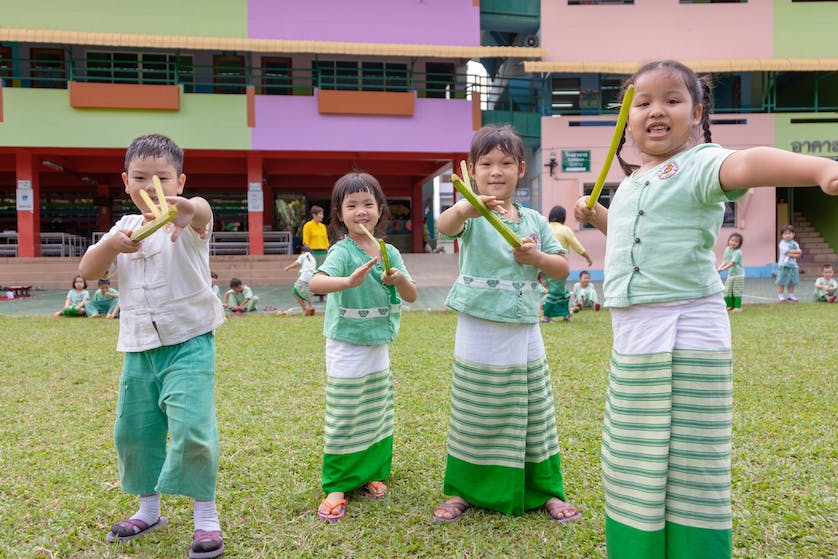
Looking at the domestic picture, it’s commonly agreed upon that the best education in the country is found in Bangkok — where the curriculum is designed — whereas the quality of education appears to lessen in proportionate size to population, becoming worse the smaller the town or village. “Partly it’s because of the way the government designed the educational infrastructure, expecting each provincial department to be Bangkok’s representative in the area. So, under this mechanism, the government’s Ministry of Education expects provinces like ours to not only represent but also echo and administer the policy they designed,” explained Associate Professor Dr. Nongyao Nawarat, Faculty of Education, Chiang Mai University. In Chiang Mai, over 80% of schools are affiliated with the ministry, according to the Provincial Administrative Organisation. These schools, being part of the centralised structure, are dependent on resources from the ministry. “Resources are distributed equally throughout the country. Teachers’ salaries are all the same. Children’s expenses are also calculated at the same rate,” explained Dr. Nongyao who disclosed that 1,400 baht per student is allocated per year for primary schools, 2,000 baht for matthayom 1-3, and 4,000 baht for matthayom 4-6. “Schools are expected to allocate this budget to pay for food, uniforms, learning tools, facilities and books. High school students, for example, only have 300 baht allocated for books, which amounts to one or one and a half books per student per year.” With such limited resources, the schools are forced to seek extra funding to cover costs. Dr. Nongyao revealed that for Satit Chiang Mai School, one of the most highly regarded schools in Chiang Mai, the extra expense per student is around 45,000 baht per year, while Yupparaj Wittayalai School spends over 20,000 baht per student over the budget.
“To rely on resources from the government alone, not to mention the corruption along the way, is actually prohibitive for schools to produce quality students,” said Dr. Nongyao who continued, “and to be frank, the majority of the parents cannot afford to support these additional costs.”
“The big concern over centralisation in Thailand is the power balance between regional authorities and the central government, which is a top-down relationship. Regional authorities act as executors, only doing what they can under the given orders and resources,” said Dr. Nongyao pointing to the fact that such a system causes major issues for Chiang Mai where it is geographically large with a diverse population.
“The way Thai education is designed is based on the assumption that everyone is Thai. This is a one-fits-all curriculum. We must remember that within the population, there are indigenous people whose mother tongue isn’t Thai and they are also culturally different,” said Dr. Nongyao. “In addition to that, Chiang Mai has around a hundred thousand migrant students, straddling between two countries, whose unique needs must be addressed.”
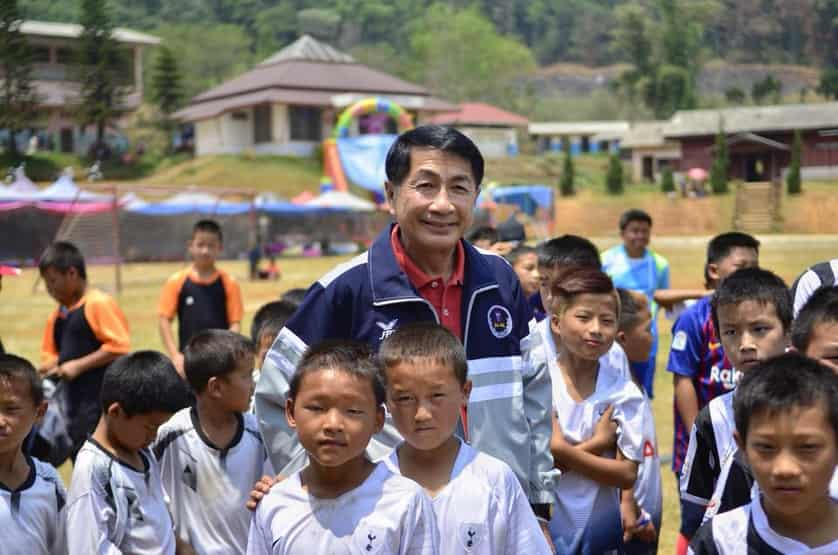
Education that is clustered in cities requires movement from rural to urban. “The policy of the government dictates that matthayom schools can only be large enough to support at least one thousand students. I think they saw it as gathering everyone together for a larger piece of the resource pie. What is forgotten is that Chiang Mai is geographically large,” said Dr. Nongyao who said that districts such as Fang, Mae Wang or San Pa Tong see students travelling for hours to go to school, with many areas being way too far for students to travel from daily. “So, while education is free in Thailand, it turns out that only city people can afford consistently good education,” continued Dr. Nongyao. The clustered education leaves many with little choice. They either drop out, bear the extra costs or get sent to religious institution such as temples or missions. “Now, imagine being a 12 year old kid living by yourself in the city,” said Dr. Nongyao who expressed concern that teachers then would also be expected to step into the role of parents.
This is just the wilting tip of the rotting structure. “There is so much data to wade through concerning this complex issue, so we decided to gather a group of people across sectors to work on it,” said Phairat Maichompoo, the deputy CEO of Chiang Mai’s Provincial Administrative Organisation (PAO). The issues pointed out include ‘ineffectiveness of management and resources utilisation’, ‘inequality access’, ‘lack of relevance to local community, daily life, and career path’, and many more. In 2015, the Chiang Mai Education Reform Alliance was officially formed, the largest movement focused on education reform in Chiang Mai’s history, now consisting of over a thousand members. The alliance has set five strategic goals: to establish pride in being a Chiang Mai citizen; to enhance the quality of 21st century learners; to increase career opportunities; to improve staff and parents; and to continue to reform with the support of a network built from members across multiple sectors. Programmes, projects and activities have been launched to further these goals. Rak Chiang Mai, for example, is an extra curriculum that adds local cultural knowledge to the syllabus, giving the opportunity to students to learn specifically about their community in both classroom as well as field settings. “We conducted a survey where 800 students took an exam to answer questions about Chiang Mai and found that the average student scored only 20%. It’s disheartening,” said Phairat who went on to say that they now have 700 schools on board this new curriculum, which is funded by the PAO as an addition to national curricula. There has been much training, with a special focus on schooling teachers as to how to work with indigenous students and parents. According to PAO, each year the organisation calls out to the 1.6 million residents of Chiang Mai to donate 10 baht each towards a fund which is distributed as scholarship or financial support for students in need. This year 2.7 million baht has been donated so far.
Phairat made it clear that the PAO, which acts as a coordinator, is only a policy maker. “How to adopt the policy is truly up to the schools,” he said. “The challenge is that this is not part of the national curriculum so it’s hard to explain to some students or parents why they should bother learning about local culture or language, for instance, when it is not going to be on the national exam. It’s an uphill battle to change perception.”
“The way Thai education is designed is based on the assumption that everyone is Thai.”
Ton Kaew Pha Dung Pittayalai school has been an avid supporter of this initiative. “It’s vital for students to have a goal they want to achieve,” said Manit Taai, the school director who provides his secondary students with ten extra-curricular subjects to choose from such as engineering, music, sports, and agriculture. “Eventually, what is needed is skills. Certificates are less important nowadays, especially when there are numerous resources online for free,” said Manit. After a year, students are free to change to other interests, if they have decided that the current path is not right for them. “Today’s digital native students can’t be expected to bury their heads in textbooks as their parents did a mere generation before because they have access to infinite information in their hands. It’s unrealistic to ban devices,” explained Manit going on to say that his school encourages the use of IT and smartphones wisely. Manit also emphasised the importance of maintaining a connection to local roots and communities, giving students hands-on and real life experiences. Almost every month a class will visit sites in Ban Tawai, where the school is located, such as organic farms and markets. “Instead of being lectured at and told, students can see for themselves how what they learn are applied in real life. And that is the essence of learning,” said Manit.
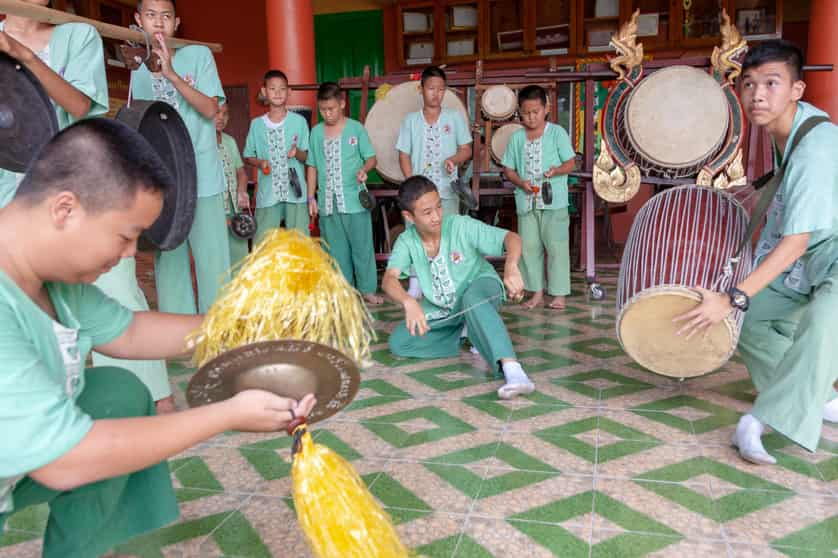
A humble private school in Wat Gate community, Khansuwan Anusorn School, has long focused on its cultural roots. Opened in 1982 by a former Lanna dancer, the school has passed her love of traditional dance down to its second generation of students. “Even back then when the school was still a nursery, my mother would have their children practice the Lanna performance,” said Chureepate ‘Auntie Lek’ Khansuwan, the school’s owner and a lifelong member of the community. “Often we are asked by temples to join in celebrations or ceremonies like Poi Luang, so we send our students to help,” said Auntie Lek looking back at how it all started. From occasionally lending a hand to the temples, the school soon started to ask its staff and students to wear traditional costumes each Friday, encouraging long-forgotten traditional games to be played in class and on playgrounds. Today, Fridays have become a day dedicated to cultural studies. “Our children’s games have now turned into an annual competition between schools. On Fridays, while kindergarten kids are enjoying traditional children’s games, gardening and other activities, the older students would learn the more advance classes like Lanna language study and join in clubs like traditional music.” Often the school will invite local experts to share their knowledge. “We have a drummer club which is taught by Por Kru, one of the last experts of this dying art.
In the past every temple had drums because they were nescessary for ceremonies and festivities. Now, the temples just use recorded music and stereos and these traditional drums are left to dust,” continued Auntie Lek who stated that the school’s drummers are now in high demand by many temples in the city. “What is more important than the skills our students acquire is that they get to actually participate in the community’s activities where they understand and get to know the society they live in by experiencing it first hand.”
“So, while education is free in Thailand, it turns out that only city people can afford consistently good education.”
Over 60% of Suksasongkhro Chiang Mai School’s students are from various tribal communities or migrants families, with many coming from backgrounds of poverty and domestic abuse. For many students the school is home itself. “It’s not like our task is finished at 4pm like most schools. We are responsible for the entire day from waking up to bedtime,” said Sumon Monkai, the school director, who makes sure his students are always kept busy. The school’s 80 rai of land is well utilised and looks like a mock-town with a small paddy field used as a research plantation by Maejo University, a chicken and fish farm, a food factory which has been certified by the Food and Drug Administration, a clothing atelier, massage class, accommodation open to outside guests, a café, an industrial manufacturing workshop, along with other facilities. “Every year our students are required to set up a business where groups of five to seven students propose a business plan to the school,” said Sumon, pointing to a row of dried banana on the café’s shelf. “The brand is even certified by the Food and Drug Administration.”
Each year, the school sees around 50 new businesses ranging from processed foods to commercial farming, catering to photography. The school even provides loans to students for their startups, asking for a 5% share of their profits as well as return in investment by the end of the year when the operation is concluded to start anew again the next year. “We actually started out with a 70,000 baht fund for business loans, now we have about 300,000 baht in cash,” said Chuanchom Boonsiri, the deputy director.
“We have been visited by Laos and Japan as a case study of multicultural management in an institution,” said Sumon ading that the conflicts between students rarely occurred except some minor disputes between primary kids. “Because our students are often from troubled backgrounds, we have to work closely with them on arrival, but once they have adjusted to the school and are kept active, they live together like brothers and sisters,” said Sumon.
“Everyone should be a stakeholder in education,” said Dr. Nongyao. “Look at the lifestyles of most students in Chiang Mai, what do they do after school? They go to shopping malls, have some grilled meat at moo krata restaurants, hang out with friends, have sex and go to bed or, for those who are academically minded, they go to tutorial colleges until late and then go to bed. I’m not saying which is better; I don’t think either are good. Being so young, they have a lot of energy, but where do they spend it,” asked Dr. Nongyao as she continued, “it’s everyone’s task to enlarge that life map and create activities and skills to expand the horizons and minds for these students. Chiang Mai has such potential for exploration. We should all get more involved with students, they are our future. Invite them, connect with them, and our city can be a sharing space for lifelong learning.”
“We are the first to dare to reform,” said Phairat with pride, going on to say that while Thailand education has long been top-town, Chiang Mai is taking the lead in changing this. “For us everyone is a target for this change. It’s not just students, it is all of us. Because education is a lifelong experience, we should all be held accountable for the state of our nation’s education. Now the skies are wide open for our alliance. The Independent Committee for Education Reform will be adjusting the law to support the alliance’s policies which will be applied in the next six months. Then, the educational administrative offices in Chiang Mai will have to listen to us,” stated Phairat with confidence.
Note: A call for donation of the 10 Baht Fund (กองทุน 10 บาท) opens throughout January. Those who wish to donate can transfer to Bank No. 501-099988-9 (SCB). Fore more information please visit edu.chiangmaipao.go.th
Related Articles:

